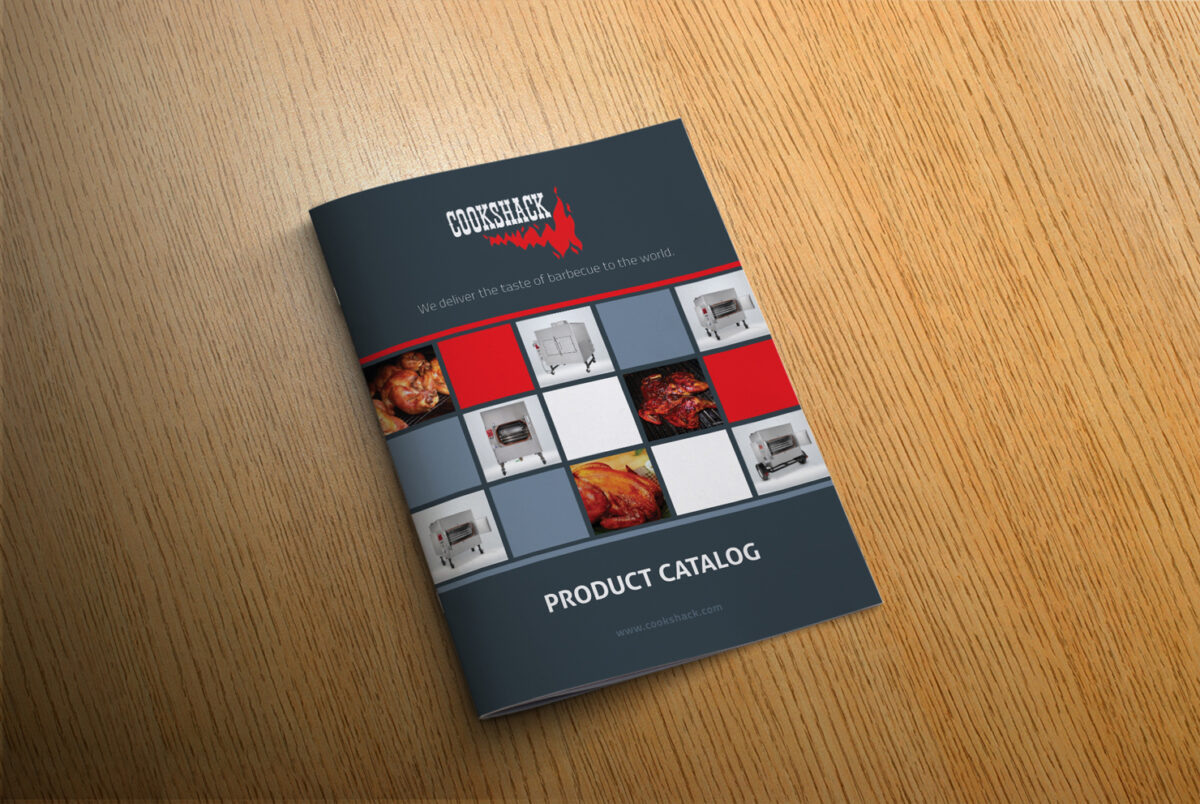
How to Design and Print Your Own Brand Catalog
In an age of digital content and online sales, it’s easy to lose sight of the power and utility of physical sales materials. But when it comes to engaging prospects in-person – things like brochures, booklets, and catalogs – are still highly effective.
The Purpose of Sales Catalogues

Sales catalogs have been around for decades. And while the look, design, and delivery have changed substantially over the years, the purpose remains the same. Sales catalogs are intended to:
- A sales catalog is another point of contact between your prospects and the brand. In this sense, it’s a strategic form of engagement that the brand has the privilege of controlling.
- Sales catalogs can be used to educate prospects on how the products work and/or the individual components of what’s being sold. This is especially important when it comes to highly technical products like machinery.
- A good sales catalog is highly persuasive. It doesn’t just list the products – it convinces the customer that the products are worthy of being purchased.
- A good sales catalog isn’t overwhelming. It actually serves the tangible purpose of simplifying information so that the prospect is aware of what you’re selling and which products they need.
3 Elements to Consider

As you design sales catalogs for your business, certain elements matter more than others. Let’s examine the top considerations so you can generate the results needed to justify the underlying investment.
Binding

To someone who has never designed or printed a book, bookbinding may seem like an afterthought. However, if you ask those in the business, this is the element that quite literally holds a sales catalog together. Getting this aspect right can mean the difference between designing a successful catalogue and wasting your money on something that underperforms.
There are a variety of types of bookbinding – including saddle stitch, spiral, case, and sewn binding – but perfect binding is often the preferred choice.
According to PrintingCenterUSA.com, “The primary benefits of perfect binding books are that they look professional and offer great visual appeal. Also, there is the option of placing content on the spine, such as an author, book title or any type of design. This is something that neither saddle stitch binding or spiral & wire-o binding offer. Perfect binding definitely produces a high quality and professional look that can’t be matched.”
It should be noted that you’ll need at least 28 pages for perfect binding to work. But assuming you meet this minimum threshold, it’s definitely worth considering. (Anything less than this and saddle stitch binding becomes a good choice.)
Cover Design

The cover of a sales catalog is arguably more important than any other page. Not only is it the first thing prospects and clients see, but it’s also the “default” page. In other words, it’s the page people see when the book lies closed on a desk.
The cover should be designed with both beauty and practicality in mind. It needs an aesthetic that’s visually compelling and representative of your brand. But it’s also crucial that the cover lubricates the sales process. Including page numbers underneath featured products is one way to do this.
Layout

There are dozens of layout strategies for sales catalogs. The one you choose will depend on the industry you’re in, the products you’re selling, and your overall sales objectives. There are, however, some general rules of thumb that apply.
When it comes to formatting, for example, give your products room to breathe. Stacking too many products on top of one another will leave you with a crowded look. Strip out the superfluous elements and focus on the underlying value of the product being sold.
As for descriptions, you don’t need a 300-word write-up for each product. Brevity is essential. Try to boil each product down to a one- or two-sentence value statement. This allows you to use large, high-quality visuals that resonate with your audience and move them to action.
Diversify Your Approach
Sales catalogs are important, but they’re far from the only investment you should make. Diversify your approach by leveraging social media, video, blogging, and in-person events. A combination of multiple types of sales content will yield positive results.










